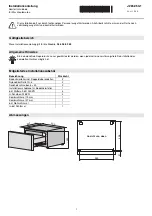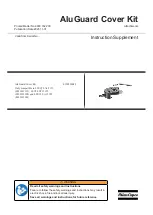
6. Discharge Rate
The discharge rate of the battery in Amps are is calculated in I10.
I10 = current for 10hr discharge to 100% DOD. This will be the basis
for all discharge rates across this brochure. For example:
Let’s take the Eternity OPZV 10 OPzV 1000
C10 capacity = 1185Ah to an end of discharge voltage of 1.80V @
20°C
1 x I10 = 1 x (10hr discharge)
1 x I10 = 1 x 118.5 = 118.5A
5 x I10 = 5 x 118.5 = 592.5A
End of Discharge Voltage
Discharging too much capacity from the battery will lead to early
failure so the user must ensure that measures are in place to prevent
this. The recommended low voltage disconnect settings are
mentioned below:
g) IUI Charging Profile
The IUI charging method is perceived as the best method of charging
for a lead acid batteries and will increase the cycle life of the cell. The
charging method is similar to the above but an additional constant
current phase is added after the Constant voltage phase. The final
constant current phase equalises the charge over the individual cells
to ensure even finishing. This will help improve the battery efficiency
and ultimately increase the cycle life.
Bulk Charge / Phase 1
The charging current is set to a limit between 2-5 x I10 until it reaches
a maximum voltage of 2.35V / cell.
Constant Voltage / Phase 2
Here the voltage is set to 2.35V / cell. During this phase the absorbed
current will start to decrease and finally reach a value of 0.005A / Ah.
At this point the battery is considered fully charged and the rectifier /
charger system should be switched back to the relevant float voltage.
The constant Voltage phase of the charge should be limited to a
maximum of 10hrs with maximum current of <1.2A/100Ah.
I Phase / Phase 3
No voltage limits, but maximum current of <1.2A/100Ah for a duration
of maximum 4 hours.
The float voltage value requires a thermal compensation of -3.5mV/
cell/°C for temperature increases. For temperature decreases in the
cell the voltage should be increased by 3.5mV/Cell/°C. See graph
below. Failure to change these values will lead to capacity problems
and reduction in operational life.
c) Equalizing / Boost charge 2.35 – 2.4V
Chargers usually have two adjustable charging voltages: one for the
“floating” charge and one for the “equalizing” charge (also known as
“boost”, “high rate” or “recharge”).
The equalizing charge is generally required:
- when the total voltage spread between the cells is greater than 0.04
V under float charging conditions
- after exhaustive discharges
- for fast recharging after a discharge
- when charging cells in standby applications with frequent power
outages
- for float charge using voltages below 2.23 Vpc
Boost charge voltage is 2.35 – 2.4V per cells for a maximum duration
of 48 hours. It can be turned off earlier though if the current has
decreased to a value lower than 0.05 x I10.
d) Charge current limit
The limit for the charging current using the float charge voltage after a
discharge is limited to 5 x I10
e) Charging Time
Use the graph below for to estimate typical charging times:
f) IU Charging Profile
The IU charge is the most common method for fast recharging or
when batteries are charged in cyclic applications. It consists of two
phases:
Bulk Charge / Phase 1
The charging current is set to a limit between 2-5 x I10 until it reaches
a maximum voltage of 2.35V / cell.
Constant Voltage / Phase 2
Here the voltage is set to 2.35V / cell. During this phase the absorbed
current will start to decrease and finally reach a value of 0.05A / Ah.
At this point the battery is considered fully charged and the rectifier /
charger system should be switched back to the relevant float voltage.
The constant Voltage phase of the charge should be limited to a
maximum of 10hrs with maximum current of 5A/100Ah.
Back up time (h)
U (V) per cell
0,5-1,5
1,70
1,5-3
1,75
>3-24
1,80
24-240
1,85


























